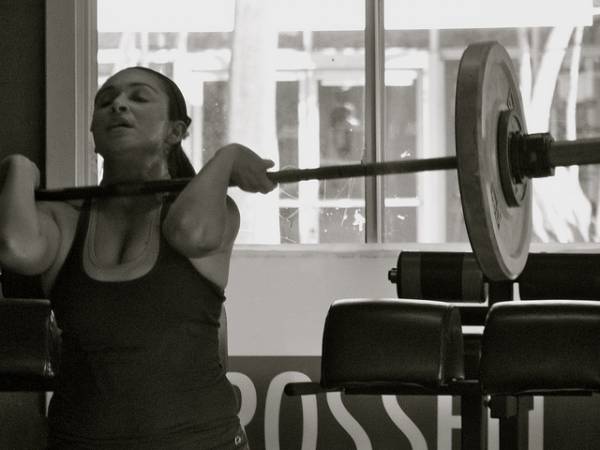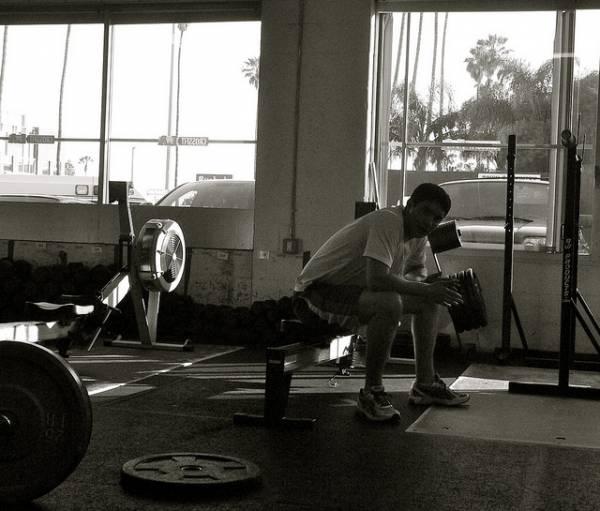If you are anything like me, there are not many things in life that can put you in a bad mood. Most of the time it’s not worth it. However, having a ‘bad’ training session used to have me walking around with a face like a baboon’s behind, until I snapped myself out of it a little later.
I have no doubt that many of you have had similar experiences. Perhaps you have gone into a session feeling good and ready, but when it came to lifting, it felt like you had never snatched before. Or perhaps you have come home from a training session feeling disappointed that you have not hit a personal record?
You have high expectations of yourself, and that is a good thing.
So how do you deal with a training session that is not going according to plan?
Firstly, let’s take a harsh look at your expectations. Is your training session so bad? You’re not going to have an ideal training session day-in, day-out. There are plenty of reasons for that – recovery, sleep, and lifestyle to name a few. And what gives you the right to hit PRs most sessions? Given that this was probably the case when you first started out, you could be forgiven for expecting it to continue in this way. Unfortunately, once this honeymoon period is over, continuous PRs are rarely the case.
So, having realigned our expectations, perhaps what we previously considered a bad session is not actually that bad after all. What does a bad training session actually look like? Let’s flip this for a second and outline what defines a good training session.
The moment of change for me came when I stopped thinking in terms of PRs, and started thinking in terms of progress. Sure, all PRs are progress. But progress is not all about PRs. Hitting a PR through adding weight can be termed an increase in intensity. However, an increase in intensity is only part of the picture. In what other ways do we progress within our training?
I believe in the mantra of “Mechanics, Consistency, and Intensity” – in that order. When learning a new skill or movement, basic mechanics are the foundation upon which everything else is built. An improvement in mechanics from one session to another is the progress that is relevant here. Any related increase in intensity is almost secondary. Progress of a mechanical nature is relatively easy to observe from session to session.
The next step is to dial in these mechanics through their consistent application. We’ve all been there when learning a new skill – one session you have it, and the next session you don’t. Being able to consistently apply an improvement in mechanics is progress. It is more than likely that increases in intensity will happen alongside this naturally as you become more consistent in your proficiency. However, our focus is on this regularity of mechanical improvement. Compared to initial improvements in mechanics, this is not as easy to pick up on from session to session.
 Lastly, an improvement in intensity through adding weight, as we have discussed, is perhaps the most obvious form of progress during a session. Progress through going heavier will follow progress in mechanics and consistency – adding significant weight before this foundation has been laid is ill-founded progress. (It is worth noting here that adding weight is only one way of increasing intensity – but that is the subject of another article.)
Lastly, an improvement in intensity through adding weight, as we have discussed, is perhaps the most obvious form of progress during a session. Progress through going heavier will follow progress in mechanics and consistency – adding significant weight before this foundation has been laid is ill-founded progress. (It is worth noting here that adding weight is only one way of increasing intensity – but that is the subject of another article.)
Therefore, if mechanics, consistency, and intensity improvements are all aspects of progress, and making progress is what defines whether a training session is good, then advancing any of these aspects within your training session is both progress and positive.
Now, let’s revisit our original question – how do you deal with a bad training session? Firstly, having now worked out what a good, progressive training session looks like, the next time you feel like you are in the middle of a bad training session, take a breath and a step back. Assess whether you have actually progressed in any of the above measures. If so, you are winning.
I’m not oblivious to the fact that there are times when none of these hold true and you really are having a bad day at the office. Let’s say you are missing lifts that you would usually make with your eyes closed with unnerving consistency. Hold on a minute, there’s that word again – consistency.
If you are consistently missing these lifts throughout the session, assess if your inconsistency is consistent. Are your missed lifts due to making the same error over and over again? Try to diagnose your fault – ask a coach, video yourself, or whatever you need to do to assess where you are going wrong. Once you have found the cause, work out how to correct the fault and fix your lift. If you don’t manage this within the session, it’s still not a big deal. Go away and research how to improve, so that if and when it happens again you are in a position to deal with it.
BOOM! You have just turned your bad training session into not only a better one, but a good one. Why good? Because you have learnt how to assess and, more importantly, correct your mistakes. Actually, this goes one step further. By learning specific strategies for how to get yourself out of a hole, you are learning how to fight your way through a tough training session and still take something away from it.
 Let’s look at one more scenario, the worst case scenario where none of this works. You are unable to make amends within the session and are not able to assess where you are going wrong, even after the event and with the help of others. In these marginal cases, take another step back, and review your recovery, sleep, nutrition, stress levels, and other lifestyle factors. Often, all it takes is a simple review of these things to realize something is out of the ordinary, and this has carried over negatively into your training. If this is the case, get it sorted. If you are not sure what ordinary is, now is a good time to start keeping a log of these things so you can look back on it and learn about how you work best.
Let’s look at one more scenario, the worst case scenario where none of this works. You are unable to make amends within the session and are not able to assess where you are going wrong, even after the event and with the help of others. In these marginal cases, take another step back, and review your recovery, sleep, nutrition, stress levels, and other lifestyle factors. Often, all it takes is a simple review of these things to realize something is out of the ordinary, and this has carried over negatively into your training. If this is the case, get it sorted. If you are not sure what ordinary is, now is a good time to start keeping a log of these things so you can look back on it and learn about how you work best.
I have a confession. I’m afraid I lied to you earlier. For those of you who have made it this far into the article, I will let you in on a secret. The real turning point in coming away from my training sessions like a grinning chimp rather than a scorned silverback was when I understood that progress is just a part of the truth. The whole truth is that learning is the key to getting benefit from almost any session. Is progress learning? Damn straight. Even getting a PR is your body learning how to make that happen.
Learning is valuable. A bad training session is in fact more valuable than a good one.
This article is not meant to serve as an excuse for not hitting PRs or continually train in a mediocre manner. It provides another lens through which to view your training sessions, and a checklist to go through when things are tough to help you continue to progress, learn and be happy.
Photos provided by CrossFit LA.






